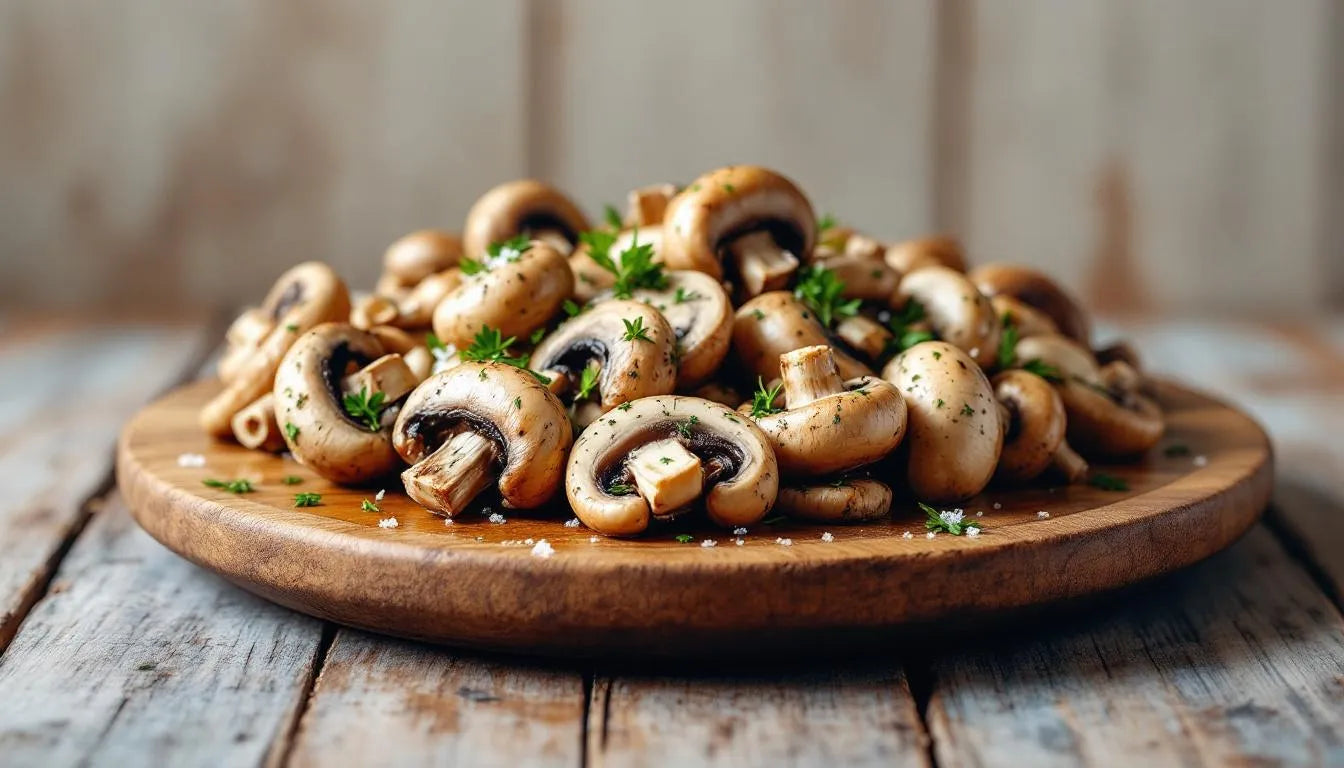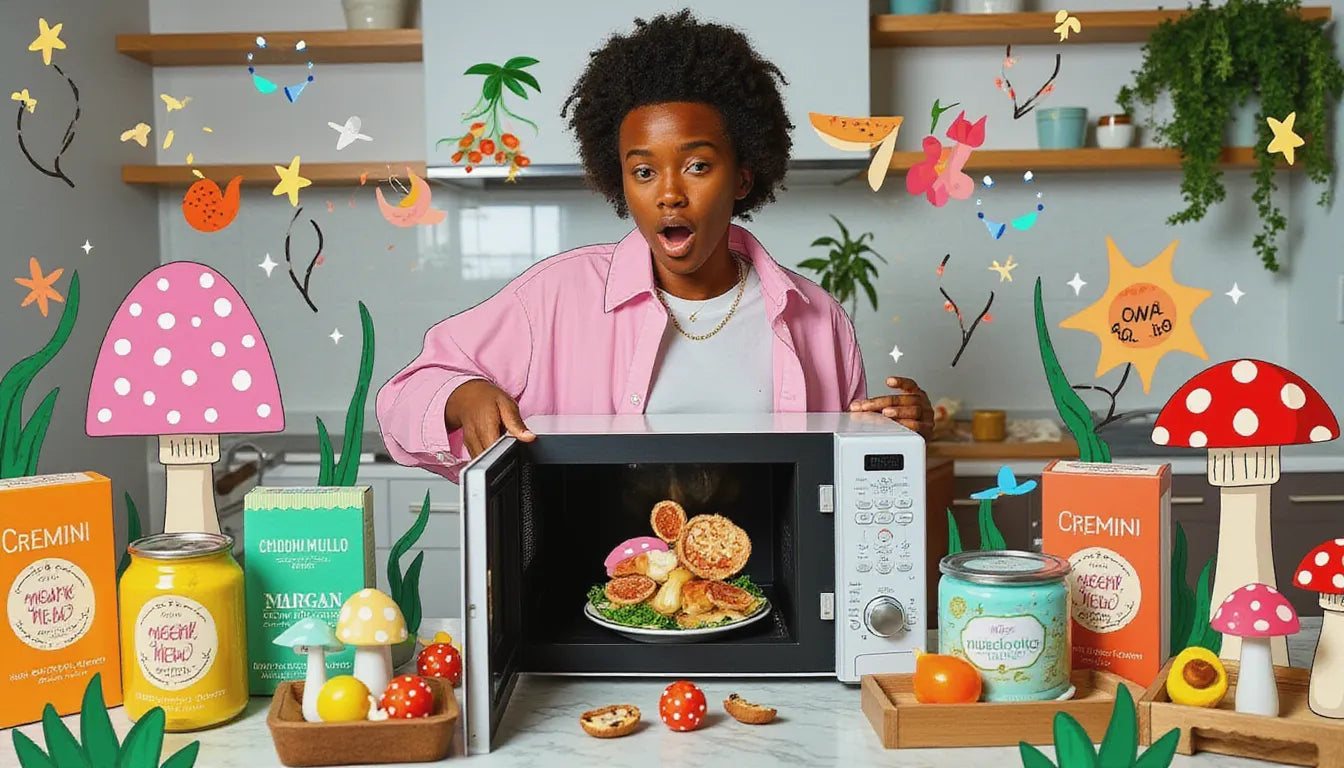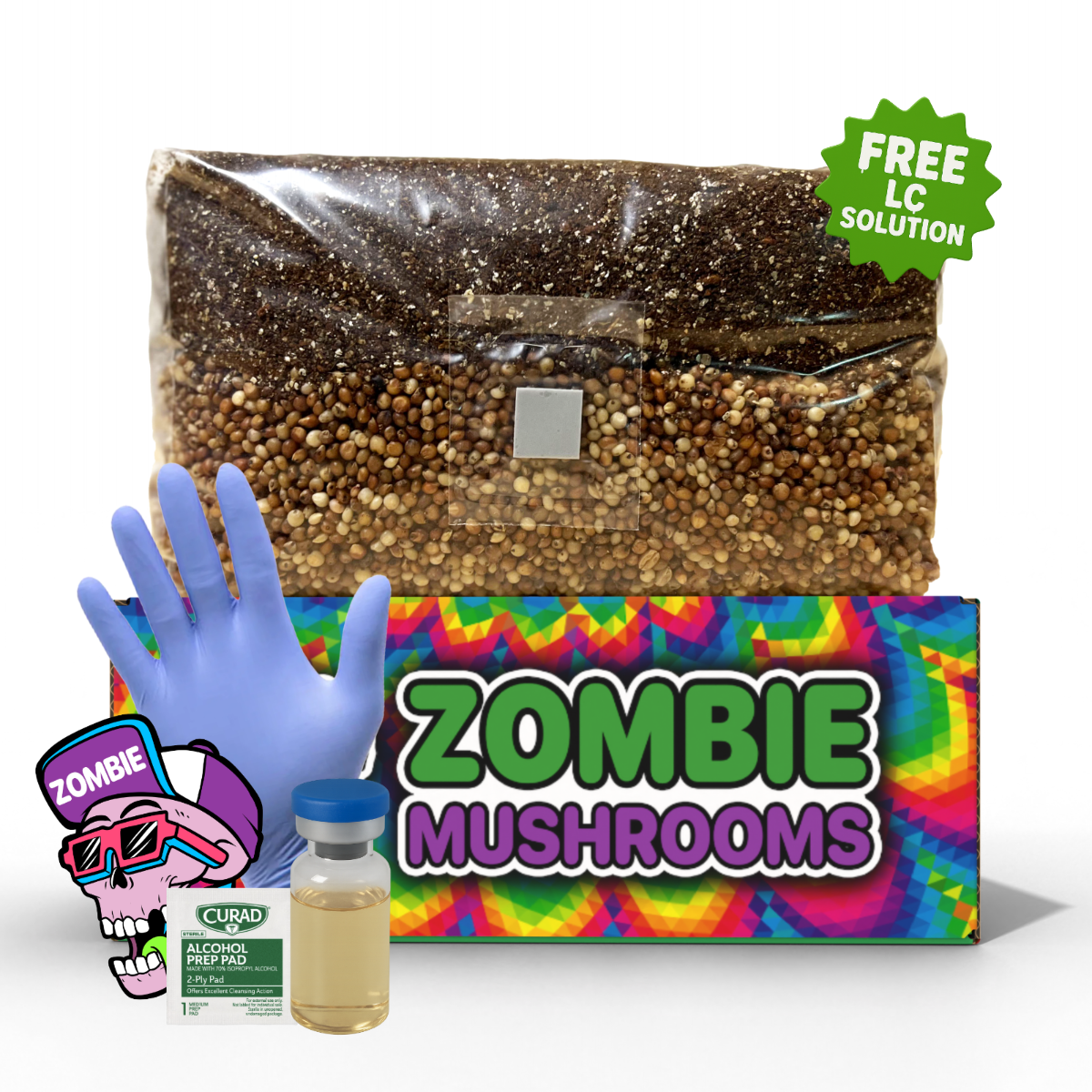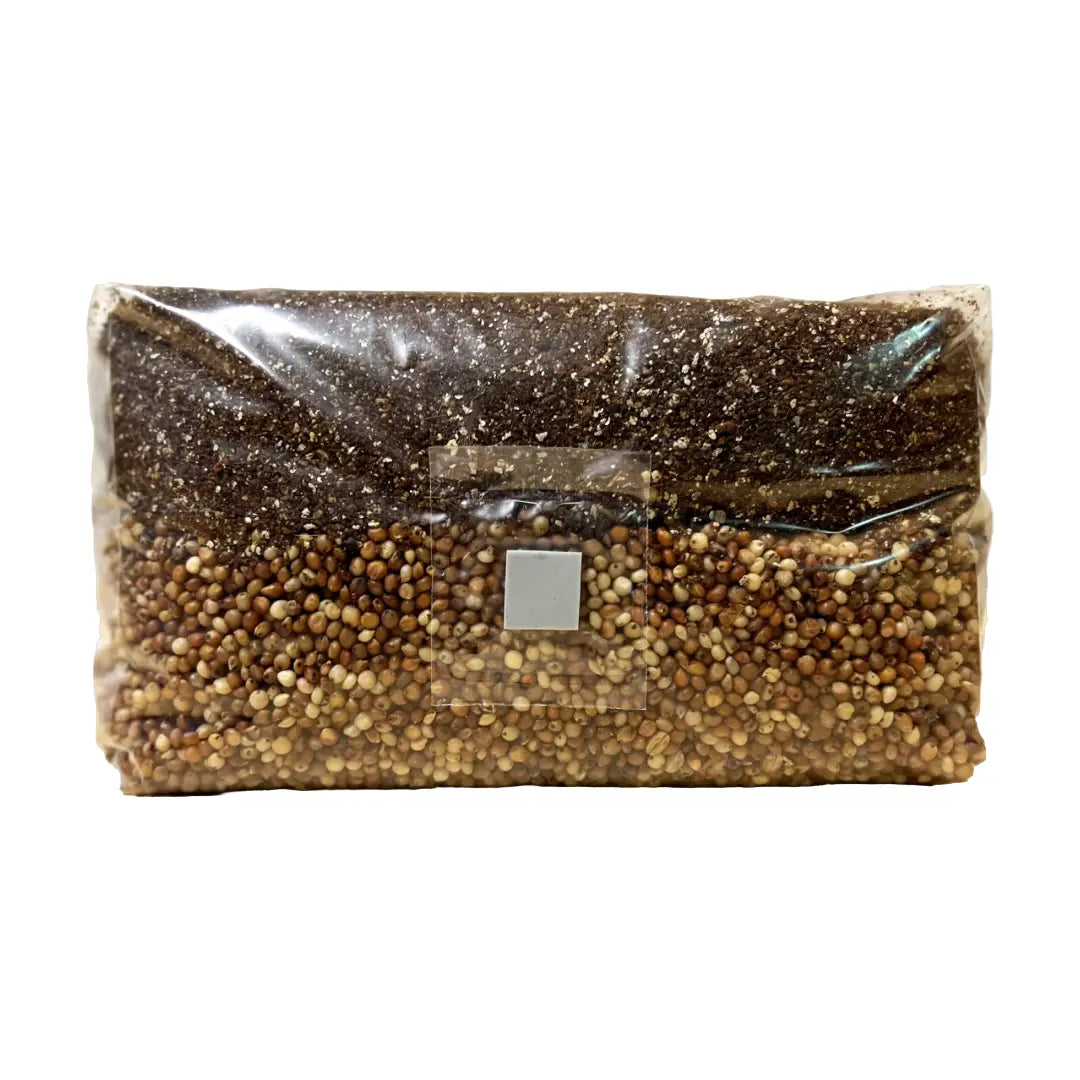⬇️ Prefer to listen instead? ⬇️
- Microwaving preserves more antioxidants in mushrooms compared to frying or boiling.
- No oil or butter is needed to microwave mushrooms, reducing unnecessary calories.
- Mushrooms cook in just 2 to 5 minutes in the microwave, making them ideal for quick meals.
- Homegrown mushrooms offer better freshness and nutrient density, perfect for microwave prep.
- Microwaving maintains the texture and nutrient quality without creating unhealthy compounds.
Microwaving mushrooms offers a quick, oil-free, and nutrient-preserving cooking method that makes this healthy food simple and satisfying to add to your daily meals. Whether you’re meal prepping, following a plant-based diet, or just seeking a healthy mushroom recipe, this technique helps you cook mushrooms quickly without losing taste or health benefits. Pair fast cooking methods with fresh harvests by growing at home using our easy-to-use mushroom grow bags.

Why Microwaving Mushrooms Is One of the Healthiest Cooking Methods
Mushrooms have earned their place among the most versatile and nutrient-rich foods from plants, filled with B vitamins, selenium, potassium, and powerful antioxidants. However, the way you prepare them may significantly affect how much of these nutrients your body actually gets.
Unlike pan frying or sautéing, which typically require oil that adds calories and may alter mushroom texture and flavor, microwaving offers a healthy, fat-free cooking method that retains nutrients without sacrificing taste.
Notably, researchers have found that microwaving mushrooms enhances their ability to retain antioxidants—compared to methods like boiling or frying. One key study concludes that microwaved mushrooms hold onto more antioxidant compounds than when prepared using traditional stovetop methods.
For those following low-calorie, flexitarian, vegetarian, or vegan diets, this positions microwaving as one of the best possible ways to prepare mushrooms quickly while supporting a nutrient-dense lifestyle.

Nutritional Perks of Microwaving Mushrooms
Microwaving does more than save time—it genuinely helps preserve the health benefits of mushrooms. Some cooking methods, like frying, subject mushrooms to high oil temperatures, which can degrade essential compounds like:
- Polyphenols: Known for reducing inflammation and supporting immune health.
- Ergothioneine: An antioxidant with potential cellular protective effects.
- Beta-glucans: Important for gut health and immune modulation.
When mushrooms are microwaved, especially without oil, their bioactive compounds remain more stable, ensuring that your healthy mushroom recipe actually delivers on its promise.
And microwaving doesn’t leach soluble nutrients the way boiling does. Water-soluble vitamins like riboflavin (Vitamin B2) and niacin (Vitamin B3), both critical for energy metabolism and brain function, are better preserved during microwave cooking.

Best Mushroom Varieties for Microwave Cooking
Some mushrooms simply respond better to microwave cooking. Here are some of the best varieties for microwave cooking. Popular and well-suited options include:
- White button mushrooms: Affordable and readily available, with a mild, adaptable flavor.
- Cremini mushrooms: More robust flavor than white buttons, ideal for savory dishes.
- Shiitake mushrooms: Chewy texture with an umami kick; perfect in Asian-inspired meals.
- Portobello mushrooms: Best when sliced before microwaving due to their density.
- Oyster mushrooms: Delicate and fast-cooking, excellent for meal prep or quick bowls.
If you decide to grow your own using DIY mushroom kits like those from Zombie Mushrooms, you’ll gain the added benefit of fresher flavor and better texture. Homegrown mushrooms are often firmer, more flavorful, and free of preservatives—an excellent base for cooking mushrooms quickly in the microwave.

Step-by-Step: Using the Microwave Mushroom Method
Microwaving mushrooms is an easy, low-mess technique. Follow these steps to get perfect, tender mushrooms every time:
1. Clean the Mushrooms
Use a damp cloth or paper towel to gently wipe away dirt. Avoid submerging them in water as mushrooms absorb liquid quickly and may release excess moisture during cooking.
2. Cut for Even Cooking
Slice, chop, or quarter your mushrooms depending on the desired texture. Smaller pieces cook faster and more evenly.
3. Place in a Microwave-Safe Container
Use a flat-bottomed microwavable bowl or glass dish. Avoid plastic containers not labeled microwave-safe, and never use airtight lids during cooking—steam needs to escape.
4. Optional: Lightly Cover
Use a microwave-safe plate, parchment paper, or microwave-safe cover placed loosely on top. This helps create gentle steam without trapping excessive pressure.
5. Microwave in Intervals
Start with 2 to 3 minutes and stir halfway. Continue in 30-second bursts as needed to make them tender (generally up to 5 minutes total).
6. Season After Cooking
Adding salt or acidic components like balsamic vinegar too early can draw out moisture and lead to sogginess. Season right after microwaving for enhanced flavor.
7. Rest Before Serving
Let the mushrooms sit for 30 to 60 seconds after microwaving. This allows residual heat to complete the cooking process for the best texture.
By following these steps, you’ll get mushrooms that are tender yet firm, rich in flavor, and perfectly suited for a wide variety of meals—without a skillet in sight.

Flavor Ideas: Seasoning Microwave Mushrooms Without Oil
One hesitancy around oil-free cooking is the assumption that it means flavorless food. That couldn’t be further from the truth when it comes to mushrooms. These fungi are already packed with umami, and a few strategic post-cooking additions can make them taste even better:
Quick Seasoning Uses:
- Garlic + Lemon Zest: Punchy and fragrant
- Smoked Paprika + Sea Salt: Adds depth reminiscent of grilling
- Balsamic Vinegar + Fresh Basil: Great for Italian or Mediterranean bowls
- Tamari + Sesame Seeds: A simple umami-rich Asian twist
- Cumin + Chili Flakes: Turn your mushrooms into taco-ready toppings
Seasoning affects not only flavor but also how the mushrooms integrate into other recipes like Buddha bowls, tacos, pastas, or soups.

Microwave Mushrooms: Good for Meal Prep
One of the best uses for microwaved mushrooms is batch meal prep. Here’s why:
- Time savings: Prepare a batch in under 10 minutes.
- Multi-day versatility: Great as a side, topping, or protein booster.
- Fridge-friendly: Store in airtight containers for up to 5 days.
- Minimal cleanup: No greasy pans or stovetop mess.
Meal Prep Tip:
Let the mushrooms cool completely before sealing in containers to avoid excess condensation buildup, which can lead to soggy leftovers.
Reheat gently in the microwave with a loosely placed lid or cover and a splash of water to retain their texture.

Cooking Comparisons: Microwave vs Sauté vs Grill
Each cooking method offers pros and cons depending on your dietary priorities, kitchen time, and taste preferences.
| Cooking Method | Avg. Time | Texture & Taste | Nutritional Value | Best For |
|---|---|---|---|---|
| Microwave | 2–5 mins | Tender, clean, earthy | High retention of nutrients | Quick, clean, low-fat cooking |
| Sautéing | 8–10 mins | Caramelized, rich, savory | Lower due to oil and heat | Flavor layering, richer dishes |
| Grilling | 10–15 mins | Charred, smoky, firm | Good retention | BBQs, meal centerpiece mushrooms |
Microwave cooking works best when speed, simplicity, and health take priority—making it a perfect choice for weekday lunches, low-fat dinners, and busy lifestyles.

Creative Recipe Ideas Using Microwaved Mushrooms
Below are some easy-to-love ideas that incorporate microwave-cooked mushrooms into nourishing, flavorful meals:
1. Healthy Mushroom Taco Bowl
Layer cooked mushrooms over brown rice or quinoa, then top with black beans, corn, avocado slices, and a squeeze of lime. Add chili flakes or cumin for extra flair.
2. 5-Min Quinoa-Mushroom Salad
Toss warm mushrooms with pre-cooked quinoa, arugula, walnut pieces, diced cucumber, and lemon-mustard vinaigrette.
3. Garlic-Herb Mushroom Toast
Pile freshly microwaved mushrooms on toasted whole-grain bread, sprinkle with minced garlic, and top with fresh thyme or basil.
4. Plant-Based Omelet Add-In
Add chopped mushrooms into a tofu scramble or vegan omelet for a savory and satisfying breakfast boost.
5. Mushroom Miso Ramen Bowl
Add mushroom slices to a microwaved bowl of miso broth with soba noodles, scallions, and tofu chunks.
These ideas use the strengths of microwaved mushrooms—fast prep, deep umami flavor, and a health-friendly profile.

Grow Your Own for the Freshest Flavor
Homegrown mushrooms offer peak texture and flavor, enhanced even further when cooked fresh in the microwave. Mushroom kits like those from Zombie Mushrooms are designed to make growing mushrooms at home as easy as possible—no green thumb required.
Why Grow Your Own?
- Superior freshness: Harvest at the moment of use
- No additives or preservatives
- Environmental benefits: Reduce buying packaged produce
- Educational and empowering: Fun for families or wellness enthusiasts
It’s also more economical in the long run, providing multiple mushroom harvests from a single kit. Best of all, freshly harvested mushrooms microwave beautifully thanks to their dense, natural moisture and firm texture.

Best Safety Practices When Microwaving Mushrooms
While microwaving mushrooms is one of the safest and easiest cooking methods, a few best practices ensure every batch turns out perfectly:
- Ensure full cooking: Raw mushrooms can be hard to digest.
- Use non-metallic, microwave-safe containers: Glass or ceramic works best.
- Vent lids loosely: Prevent steam build-up that can cause pressure issues.
- Shorten cooking times based on batch size: Larger quantities take longer and require pauses to stir halfway through.
If texture becomes rubbery, your mushrooms may be overcooked. Shorter bursts and stirring midway can help prevent this.
Ready to Make Cooking Easier?
If the idea of fast, flavorful, and ultra-nutritious mushrooms appeals to you, it’s time to use the microwave. Whether you're using store-bought button mushrooms or harvesting from a Zombie Mushrooms grow kit on your countertop, this cooking method brings convenience, taste, and health together in one dish.
From weeknight dinners to packed work lunches, microwave mushrooms can make your routine better. Don’t underestimate the power of this small appliance—your new favorite healthy mushroom recipe might just come from the microwave.



